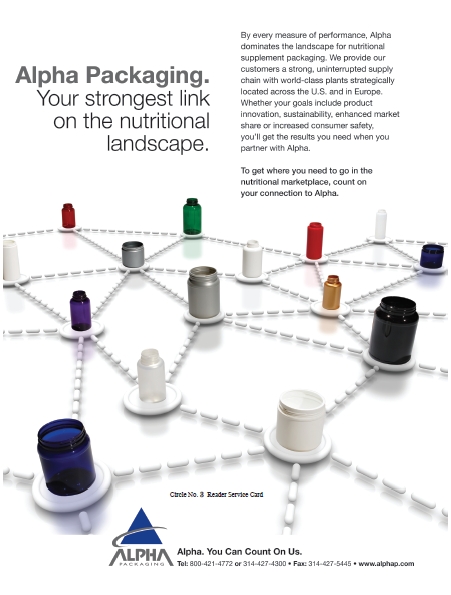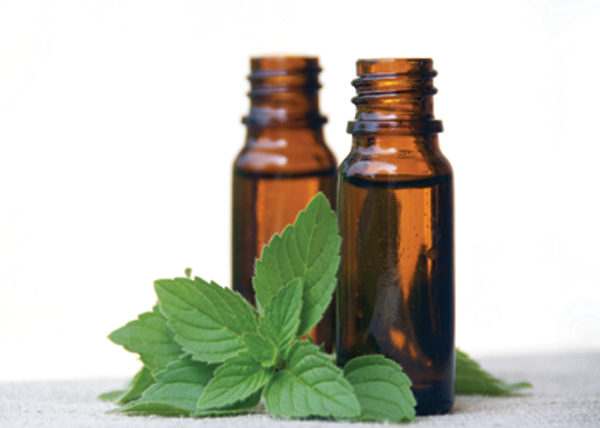With all of the effort and investment that goes into developing a product, it may be easy to become excited at the end of the process and say, “Let’s throw it on the shelf, already!” But for any product or product line, from dietary supplements to cosmetics, manufacturers would do well not to overlook the crucial last step in bringing something to market: designing the product’s home, its packaging. From efficiently yet carefully completing this process, to deciding if and how to lessen the environmental impact, it’s about time packaging decisions got some extra attention.
Time (to Market) Is of the Essence
The time it takes to finally push a product onto store shelves and into view of consumers is often a deciding factor in a product’s initial, and perhaps long-term success. This is especially the case in crowded or hot product categories, where the intense competition can often be swayed by who gets there first. The late-in-the-game process of developing packaging can throw a wrench into a product launch if it drags on too long; on the flipside, if poor decisions are made, it can affect the product’s viability and even safety.
The timeline involved in designing and producing product packaging is most impacted by the initial choice between custom or stock options, according to Marny Bielefeldt, marketing manager for Alpha Packaging, St. Louis, MO. If a company’s product is suited to existing packaging molds, the process is relatively easy from there. Custom packaging, on the other hand, typically puts the development cycle at three to four months, Bielefeldt says. Although this is not always a bad thing, those able to choose stock packaging can get to market that much quicker. “In addition to that decision, brands also need to consider the time it takes for approving bottle colors, developing graphics, printing labels or creating screens for direct screen printing, and filling the finished goods,” she says, adding that the shipping time between distant supplier facilities should also be considered.
Other types of novelty beyond the shape of the package can also affect the speed of the process. “Any time a brand is doing something entirely new—for example, using a new type of plastic or developing a new custom color—the timeline will be extended,” Bielefeldt says. With color matching, the stock versus custom issue rears its head again, as color matching can’t begin until a custom mold is available to try the color out on. When re-launching a product line with a new type of plastic packaging or establishing a new product for the first time, stability and compatibility testing on the plastic container and the product inside it can mean 12 or more weeks of waiting for results, Bielefeldt says.
But, product marketers aren’t simply subject to these time restrictions without any ability to help things along. If they can provide their packaging partner with certain information, things tend to go much more efficiently. These areas can include, according to Bielefeldt, providing direction at the outset as to the packaging materials required; the size of the bottle or jar needed; information about the target packaging they might want to emulate, possibly from a leading brand; the product launch date goal and the anticipated annual volume of sales for each SKU in the line.
With all this to consider, it might seem like a smart idea to begin the packaging design process earlier in the product development cycle. But, it is difficult to package something that doesn’t yet exist, Bielefeldt notes. Products should be fully developed before packaging is considered, since the amount or size of the product that needs to fit into the packaging determines the size of the container needed. “Take nutritional supplements, for example: tablets come in all sizes, so a 60-day supply of one supplement might require a totally different bottle than a 60-day supply of another supplement. Until you know the size of your finished product, it doesn’t make sense to shop for bottles,” Bielefeldt says. The moment these things are known, however, the packaging process should commence.
Greener Plastics
The benefits of adopting eco-friendly packaging are obvious, but it must make economic sense before most companies will jump on board. If cost has been a hindrance to going green with packaging in the past, it is no longer a valid excuse, according to Anthony Gentile, director of marketing for Xela Pack, Inc., Saline, MI. He explains that while some eco-friendly options can be more expensive than conventional materials, there are nevertheless many choices today that can move packaging in the green direction without breaking the bank. “For most companies, this means there are always cost-effective options out there that are more environmentally conscious than their current packaging,” Gentile says.
Because of these perceived cost obstacles, many companies make decisions along the lines of offering recyclable plastic bottles and calling them “green” for this reason. This is instead of looking into bottles made from recycled plastic, or attempting to house products in other more innovative materials. These types of options are in demand by eco-conscious companies, claims Gentile, stating, “Features that draw the most interest are packages made with recycled materials and reduced packaging materials.”
Indeed, in going eco-friendly, it’s not just about what type of packaging is used, but how much. More intelligent designs lead to large reductions in waste without sacrificing consumer satisfaction with a product. “In the past, it was easy enough to offer a recyclable plastic bottle and say it was ‘green,’ but the truth is that it is best to have a reduced amount of plastic being used in the first place. There is a reason that REDUCE is the first of the three Rs, and that’s because it’s the most important,” says Gentile.
Then, there are the post-consumer waste options for producing more eco-friendly packaging. Bielefeldt notes that her firm’s recycled PET (polyethylene terephthalate) or recycled HDPE (high-density polyethylene) options are sold at about a 10% price premium over virgin plastics, due to their selection of high-grade post-consumer plastics that also have Letters of Non-Objection from the U.S. Food and Drug Administration. Still, some companies are deterred by the extra cost. “Perhaps even more of a factor than the cost, though, is the fact that we have higher minimums for PLA (polylactide) and post-consumer plastics, so smaller companies cannot always meet the minimum orders even if they were willing to pay a small upcharge,” says Bielefeldt. These higher minimums are because special orders like non-standard resins require longer purge times to ready the machinery for production.
One thing companies need not always worry about is whether their decision to go green with packaging will slow down the process. Unless new compatibility tests are required, which will then take time, moving from virgin HDPE or PET to recycled HDPE or PET, for example, should be fairly seamless, according to Bielefeldt. Other moves, however, like from standard petro-based plastics to PLA, should always come with proper testing to determine shelf life, as well as the product’s compatibility with the corn resin in PLA, Bielefeldt emphasizes. When packaging bottles are colored and not clear, Bielefeldt has seen a great demand for 100% recycled PET because of the easy conversion process from non-recycled material. Now, due to a recent Letter of Non-Objection for one type of resin, there has also been an uptick of interest in post-consumer HDPE.
“Perhaps the most overlooked opportunity for becoming more eco-friendly is related to the decorating process used by marketers,” says Bielefeldt. Eliminating rollstock print labels can reduce waste, and also makes for a more easily recycled bottle without the labels and adhesive present. This can especially benefit beauty brands that often are thought to be more aesthetically pleasing when direct screen printing is used on bottles. This conversion can also, according to Bielefeldt, reduce the total weight of a finished bottle by about 10%. WF
Published in WholeFoods Magazine, January 2012









